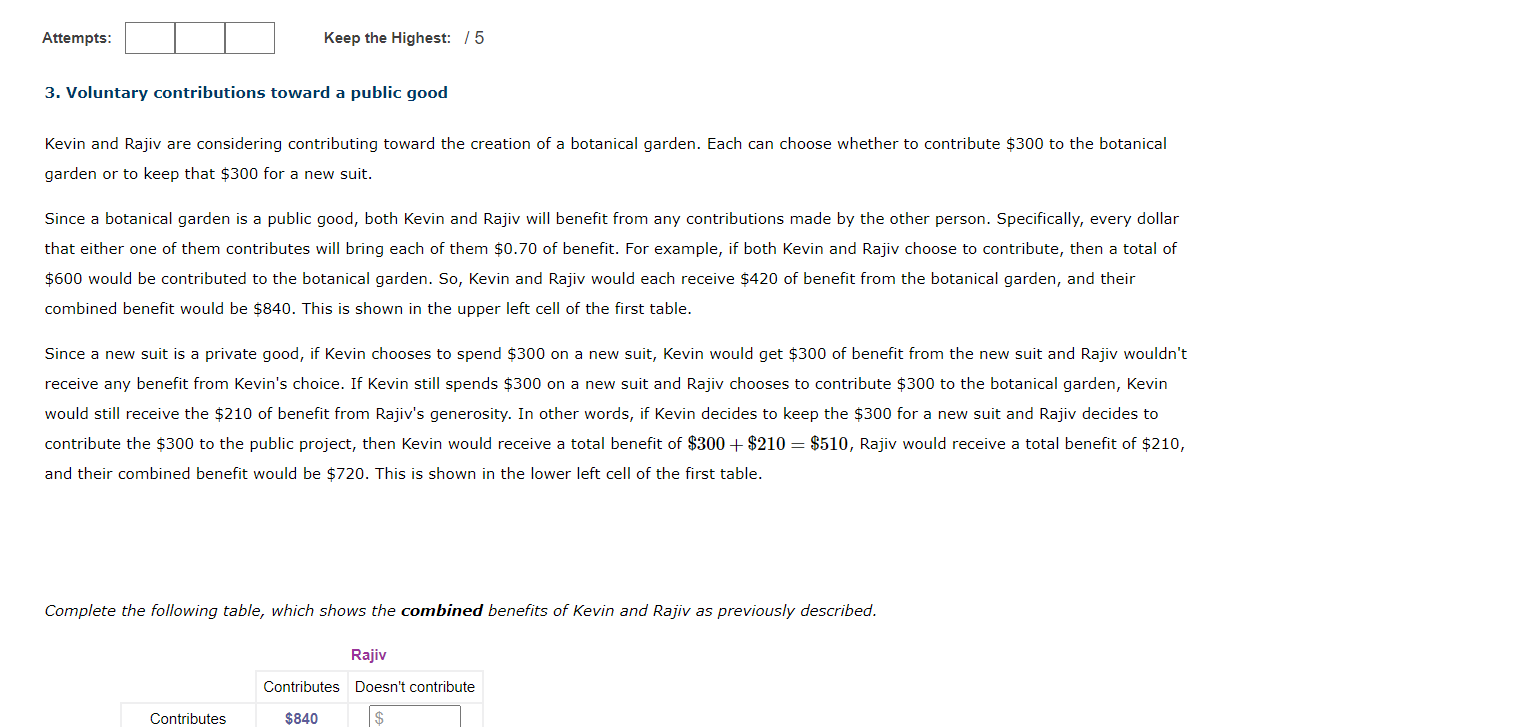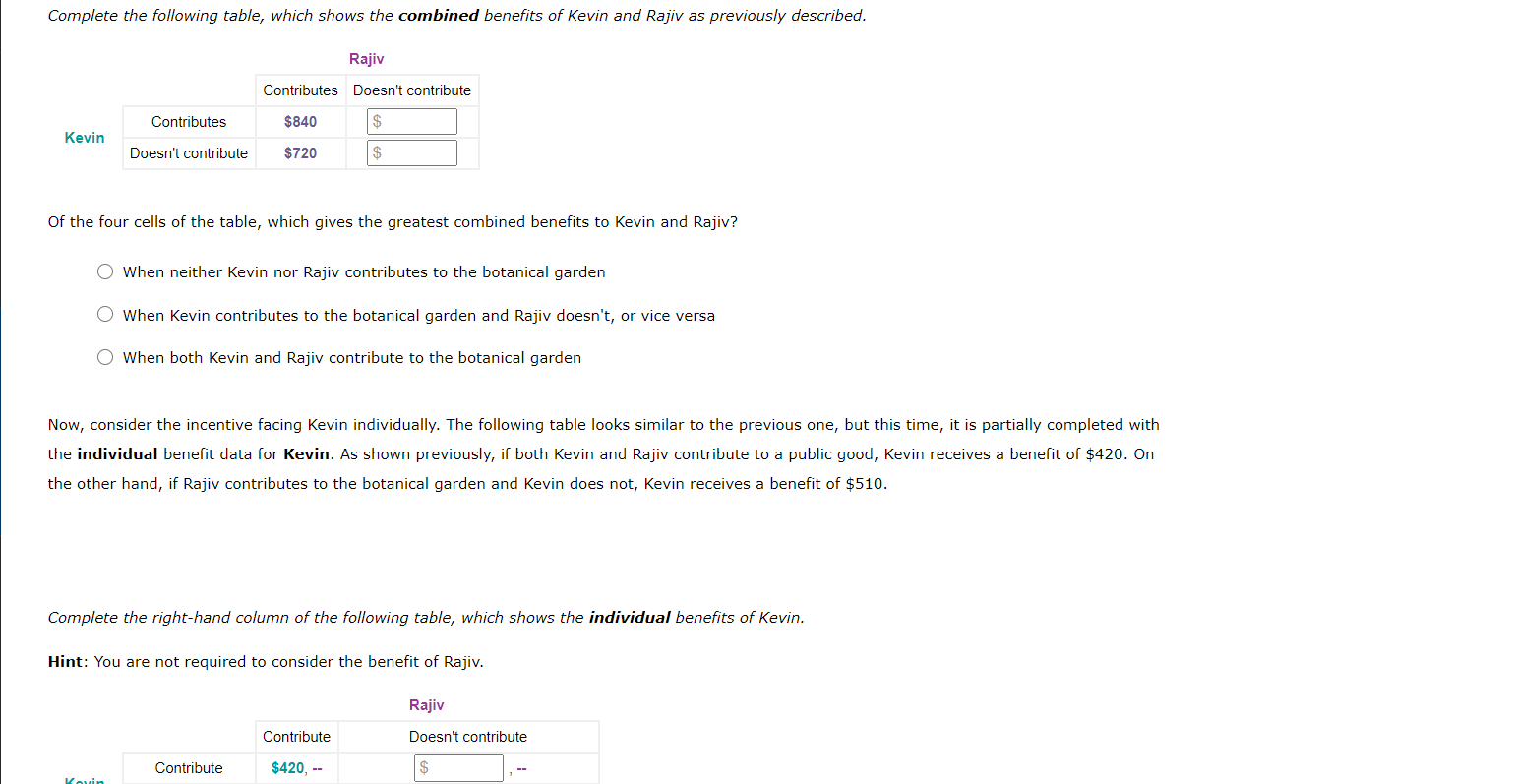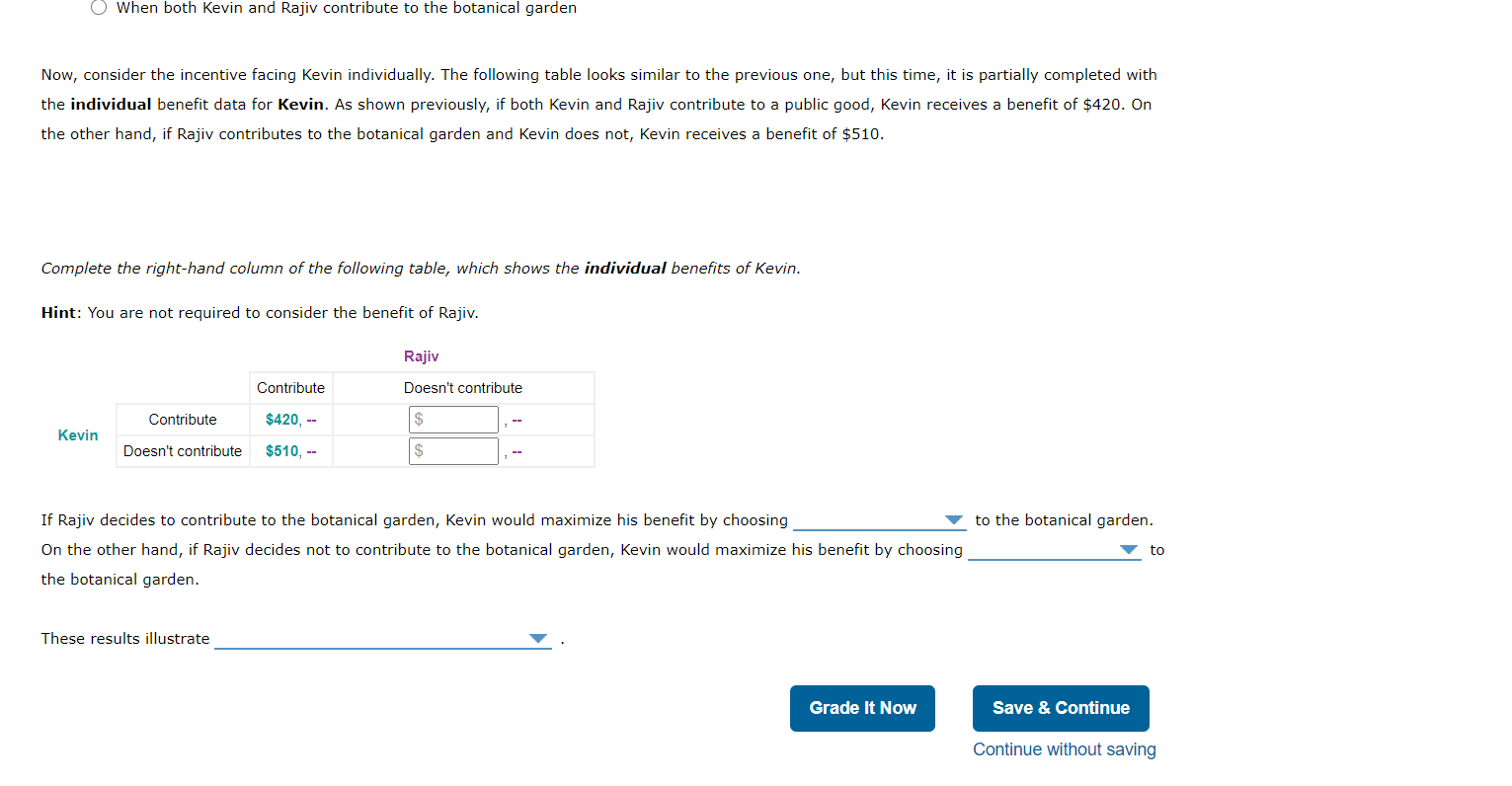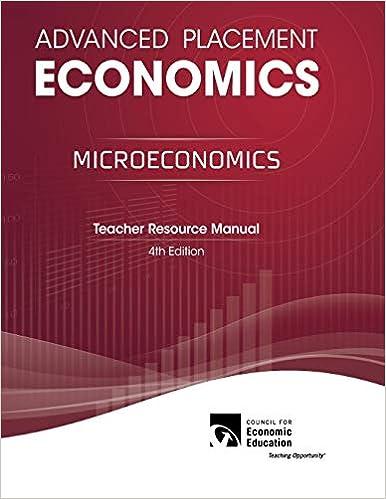Help me with some tricky principles of microeconomics problems.
Attempts: Keep the Highest: / 5 3. Voluntary contributions toward a public good Kevin and Rajiv are considering contributing toward the creation of a botanical garden. Each can choose whether to contribute $300 to the botanical garden or to keep that $300 for a new suit. Since a botanical garden is a public good, both Kevin and Rajiv will benefit from any contributions made by the other person. Specifically, every dollar that either one of them contributes will bring each of them $0.70 of benefit. For example, if both Kevin and Rajiv choose to contribute, then a total of $600 would be contributed to the botanical garden. So, Kevin and Rajiv would each receive $420 of benefit from the botanical garden, and their combined benefit would be $840. This is shown in the upper left cell of the first table. Since a new suit is a private good, if Kevin chooses to spend $300 on a new suit, Kevin would get $300 of benefit from the new suit and Rajiv wouldn't receive any benefit from Kevin's choice. If Kevin still spends $300 on a new suit and Rajiv chooses to contribute $300 to the botanical garden, Kevin would still receive the $210 of benefit from Rajiv's generosity. In other words, if Kevin decides to keep the $300 for a new suit and Rajiv decides to contribute the $300 to the public project, then Kevin would receive a total benefit of $300 + $210 = $510, Rajiv would receive a total benefit of $210, and their combined benefit would be $720. This is shown in the lower left cell of the first table. Complete the following table, which shows the combined benefits of Kevin and Rajiv as previously described. Rajiv Contributes Doesn't contribute Contributes $840Complete the following table, which shows the combined benefits of Kevin and Rajiv as previously described. Rajiv Contributes Doesn't contribute Contributes $840 $ Kevin Doesn't contribute $720 $ Of the four cells of the table, which gives the greatest combined benefits to Kevin and Rajiv? O When neither Kevin nor Rajiv contributes to the botanical garden When Kevin contributes to the botanical garden and Rajiv doesn't, or vice versa O When both Kevin and Rajiv contribute to the botanical garden Now, consider the incentive facing Kevin individually. The following table looks similar to the previous one, but this time, it is partially completed with the individual benefit data for Kevin. As shown previously, if both Kevin and Rajiv contribute to a public good, Kevin receives a benefit of $420. On the other hand, if Rajiv contributes to the botanical garden and Kevin does not, Kevin receives a benefit of $510. Complete the right-hand column of the following table, which shows the individual benefits of Kevin. Hint: You are not required to consider the benefit of Rajiv. Rajiv Contribute Doesn't contribute Contribute $420, -- $When both Kevin and Rajiv contribute to the botanical garden Now, consider the incentive facing Kevin individually. The following table looks similar to the previous one, but this time, it is partially completed with the individual benefit data for Kevin. As shown previously, if both Kevin and Rajiv contribute to a public good, Kevin receives a benefit of $420. On the other hand, if Rajiv contributes to the botanical garden and Kevin does not, Kevin receives a benefit of $510. Complete the right-hand column of the following table, which shows the individual benefits of Kevin. Hint: You are not required to consider the benefit of Rajiv. Rajiv Contribute Doesn't contribute Contribute $420, -- $ Kevin Doesn't contribute $510, -- $ If Rajiv decides to contribute to the botanical garden, Kevin would maximize his benefit by choosing to the botanical garden. On the other hand, if Rajiv decides not to contribute to the botanical garden, Kevin would maximize his benefit by choosing to the botanical garden. These results illustrate Grade It Now Save & Continue Continue without saving









